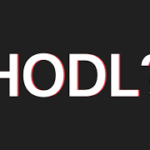Understanding Crypto Gas Fees: A Beginner’s Guide
f you’ve ventured into the world of cryptocurrencies, you might have come across the term “gas fees.” While it may sound perplexing, gas fees play a crucial role in the functioning of blockchain networks. In this beginner’s guide, we’ll demystify gas fees in simple terms, helping you grasp their significance and impact on your crypto transactions.
What Are Gas Fees?
In the realm of cryptocurrencies, gas fees are the transaction fees required to process and validate transactions on blockchain networks, primarily on platforms like Ethereum. These fees are paid in the native cryptocurrency of the network, such as Ether (ETH) for Ethereum.
Think of gas fees as the fuel needed to power and execute transactions on the blockchain. Just as you need to pay for fuel to drive a car, you need to pay gas fees to ensure your transaction gets processed efficiently and securely.
How Do Gas Fees Work?
Gas fees are determined by the complexity and computational resources required to execute a particular transaction. Each operation, such as sending funds or executing a smart contract, consumes a certain amount of computational power, which translates into a specific gas fee.
The gas fee is calculated based on the gas price (the cost of each unit of gas) and the gas limit (the maximum amount of gas allocated to a transaction). The total gas fee is the product of the gas price and gas limit.
Why Do Gas Fees Vary?
Gas fees can fluctuate widely due to several factors, including network congestion, transaction volume, and market demand. During peak times, when many transactions are being processed simultaneously, gas fees tend to rise as users compete to have their transactions confirmed quickly by miners.
It’s important to note that gas fees are not fixed and can vary significantly from one transaction to another. Simple transactions may require lower gas fees, while complex operations like executing a smart contract or interacting with decentralized applications (DApps) may incur higher fees due to their computational demands.
Tips for Managing Gas Fees:
- Choose the Right Time: Gas fees tend to be lower during periods of lower network congestion. Monitoring gas fee trends and selecting off-peak times can help minimize transaction costs.
- Adjust Gas Price and Limit: Some wallets and platforms allow you to customize the gas price and limit for your transactions. Lowering the gas price or optimizing the gas limit can help reduce fees, but be cautious as extremely low values may result in slower transaction processing or potential failures.
- Explore Layer-2 Solutions: Layer-2 solutions, such as sidechains or scaling solutions like Ethereum’s Optimistic Rollups or Polygon (formerly Matic Network), aim to alleviate network congestion and reduce gas fees. Consider utilizing these alternatives for more cost-effective transactions.
Conclusion:
Gas fees are an essential component of blockchain networks, ensuring the secure and efficient processing of transactions. Understanding gas fees empowers you to make informed decisions when engaging in crypto transactions, allowing you to optimize costs and manage your crypto activities more effectively.
While gas fees may seem like an added cost, they reflect the underlying computational resources required to maintain the security and integrity of blockchain networks. By staying informed about gas fee dynamics and exploring strategies to mitigate costs, you can navigate the crypto landscape with confidence and make the most of your digital asset transactions.




